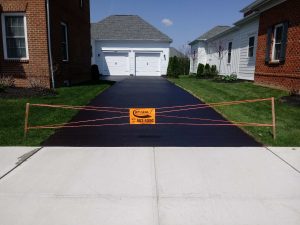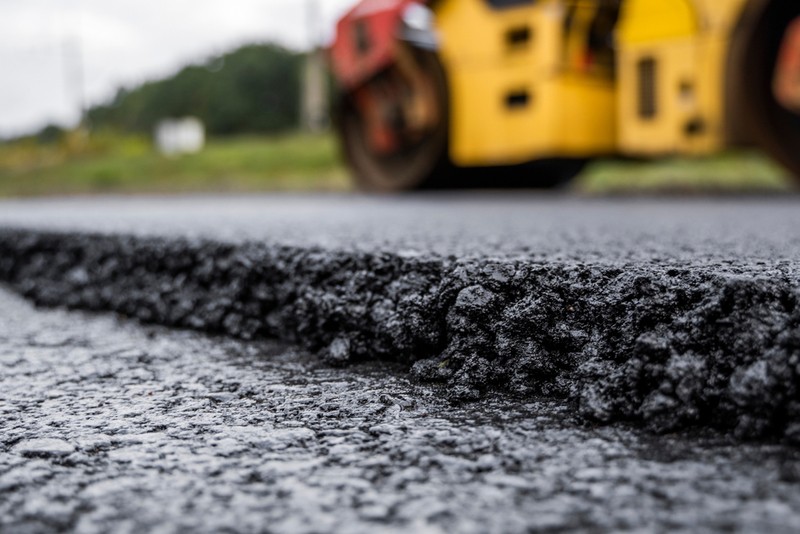Renew Your Building with Regrading and Asphalt Sealing Techniques
Hot Mix Asphalt: A Sustainable Option for Pavement
Warm Mix Asphalt (HMA) has actually emerged as a leading lasting option for sidewalk options, providing a myriad of ecological advantages and ingenious modern technologies. Its capability to lower and reuse materials energy usage presents an engaging situation for its adoption in road building projects. The long-lasting efficiency and resilience of HMA make it a preferred option for facilities growth. As the need for environmentally friendly building practices grows, exploring the subtleties of HMA's sustainability can give valuable insights right into the future of sidewalk solutions.
Ecological Advantages of Warm Mix Asphalt

In Addition, Hot Mix Asphalt assists to reduce city heat island results. Its dark shade absorbs sunlight, reducing the quantity of warm reflected back right into the ambience contrasted to lighter-colored pavements. This can decrease ambient temperatures in urban areas, reducing the demand for air conditioning and inevitably decreasing energy consumption.
Furthermore, Warm Mix Asphalt adds to improved stormwater monitoring. Its porous nature allows water to penetrate the pavement and recharge groundwater supplies, lowering overflow and the danger of flooding. These ecological benefits make Hot Mix Asphalt a sustainable option for leading freeways and roadways.
Energy Performance in HMA Manufacturing
Is energy performance an essential consider the manufacturing of Hot Mix Asphalt (HMA)? Absolutely. Power plays a considerable duty in the manufacturing of HMA, affecting both cost and environmental sustainability. One key aspect of energy efficiency in HMA production is making use of warm mix asphalt (WMA) technologies (commercial parking lot paving). WMA enables the blending and placement of asphalt at reduced temperatures contrasted to traditional warm mix asphalt, leading to reduced power consumption during manufacturing. This procedure not just lowers fuel usage but likewise decreases greenhouse gas discharges, making it an extra eco pleasant option.
In addition, innovations in plant modern technologies have brought about even more energy-efficient HMA manufacturing processes. Modern plants are created with attributes like recycled asphalt sidewalk (RAP) handling capabilities, effective heater systems, and boosted insulation, all contributing to power financial savings. By enhancing power use in HMA manufacturing, the industry can decrease its carbon impact while maintaining premium pavement products. Power efficiency is, for that reason, a critical factor to consider in making certain the sustainability of Warm Mix Asphalt manufacturing.
Recyclability of Warm Mix Asphalt
The recyclability of Hot Mix Asphalt (HMA) is a critical facet of its sustainability and long-lasting environmental impact. HMA is among the most recycled materials in the USA, with over 100 million lots of reclaimed asphalt sidewalk (RAP) being reused every year in visit this page brand-new pavement building. Recycling HMA supplies numerous ecological benefits, such as reducing the requirement for virgin materials, reducing energy consumption during production, and lowering the amount of waste sent out to landfills.
The process of recycling HMA entails milling the existing pavement, crushing it right into smaller items, and mixing it with brand-new accumulation and asphalt binder visit to create a recycled mix. This recycled mix can typically carry out as well as or perhaps far better than conventional HMA, while needing less basic materials and creating lower greenhouse gas exhausts. By integrating RAP right into brand-new pavement tasks, road firms can save all-natural sources, lower expenses, and reduce the ecological footprint of road building and upkeep tasks. On the whole, the recyclability of HMA plays a significant duty in promoting lasting practices within the pavement market.

Long-Term Efficiency of HMA
Asphalt sidewalks demonstrate toughness and strength over an extended period, showing the lasting performance of Hot Mix Asphalt (HMA) The longevity of HMA can be attributed to its capacity to stand up to heavy web traffic loads, extreme weather, and the results of aging. Studies have actually shown that well-designed and correctly created HMA sidewalks can last for twenty years or more with routine maintenance. The trick to optimizing the long-term performance of HMA hinges on using top notch products, following best techniques in construction, and implementing efficient maintenance strategies. Appropriate drain, regular evaluations, and prompt repairs are important for protecting the architectural integrity of HMA pavements with time. Additionally, improvements in HMA modern technology, such as using polymer-modified binders and warm mix asphalt, have better improved the resilience and durability of HMA sidewalks. By focusing on quality building and construction and maintenance techniques, HMA remains to prove itself as a affordable and lasting solution for long-lasting pavement infrastructure.

HMA: Sturdiness and Sustainability
Demonstrating both resilience and sustainability, Hot Mix Asphalt (HMA) has ended up being a cornerstone in the building and construction of durable pavement infrastructures - commercial parking lot paving. HMA's resilience originates from its capability to stand up to hefty loads, severe weather problems, and high traffic quantities, making it a trustworthy selection for highways, freeways, and airport terminal runways. The composition of HMA, which commonly consists of aggregates, binder, and filler, plays an essential website link function in boosting its durability and resistance to deterioration
Additionally, HMA's sustainability hinges on its recyclability and energy-efficient production procedure. The ability to reuse recovered asphalt sidewalk (RAP) in new HMA blends reduces the need for virgin products and reduces the ecological impact of sidewalk construction and upkeep. Additionally, the energy performance of generating HMA depends on its reduced blending temperature levels contrasted to various other sidewalk products, causing lowered energy consumption and greenhouse gas exhausts.
Verdict
To conclude, warm mix asphalt (HMA) uses a sustainable service for sidewalk with its eco-friendly attributes. HMA's recyclability, power performance in manufacturing, and lasting sturdiness make it an environmentally friendly option for road building. By saving natural resources, minimizing waste, and reducing greenhouse gas exhausts, HMA plays a crucial duty in advertising sustainability in facilities advancement. Its capability to mitigate metropolitan warm island results additionally underscores its relevance in developing durable and ecologically aware pavement systems.
HMA is one of the most recycled materials in the United States, with over 100 million bunches of redeemed asphalt sidewalk (RAP) being reused each year in new pavement building and construction.The procedure of recycling HMA involves grating the existing pavement, crushing it right into smaller items, and mixing it with new accumulation and asphalt binder to develop a recycled mix.Asphalt pavements demonstrate toughness and strength over an extended period, mirroring the long-lasting efficiency of Warm Mix Asphalt (HMA) In addition, developments in HMA innovation, such as the usage of polymer-modified binders and cozy mix asphalt, have actually further enhanced the resilience and long life of HMA pavements. The capacity to reuse redeemed asphalt pavement (RAP) in new HMA mixes minimizes the need for virgin materials and minimizes the ecological effect of sidewalk construction and upkeep.